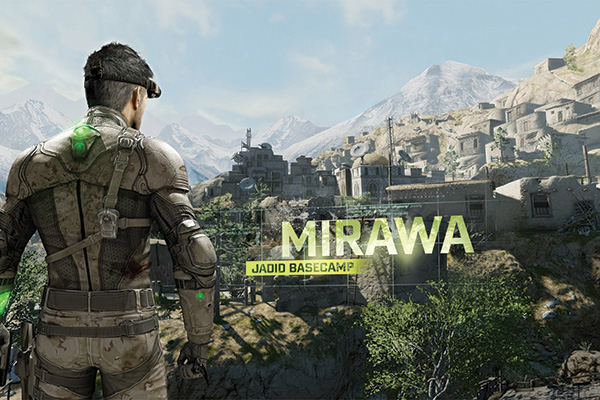Splinter Cell: Blacklist
Developed by Ubisoft Toronto | Published by Ubisoft | Platforms: 360, PS3, Wii U, PC
There was time, not too long ago, when I thought that stealth games were a genre that could only appeal to a very small subset of gamers. Recently, however, I have been enthralled not only by stealth games, but also by attempting stealth tactics in games that are not purely stealth-driven. It could be argued that my tastes are just changing – maturing, perhaps? But I think that this change is not occurring in my head, but in the industry itself.
Approaches to developing stealth games are maturing as technology crucial to good stealth adventures, such as AI and environment interaction, improves. Though I have no doubt that the type of action in a stealth adventure game appeals to some gamers more than others, I believe that we have reached a point in the development of the genre where any gamer can enjoy its nuances due to the sophistication of the technology behind it. Splinter Cell has epitomised stealth adventure gaming for the past decade. The latest iteration in the series, Splinter Cell: Blacklist, stands as a shining example of how the genre has matured and become more inclusive.
As with all games that have “Tom Clancy” somewhere in the title, the storyline revolves around an international terrorist threat. This threat, however, struck a chord with me, as I’m sure it will with many other gamers. Blacklist sees a terrorist organisation called “The Engineers” carrying out a series of terrorist attacks on American facilities and organisations. Each of these attacks is given a time and a theme (termed the “Blacklist”) that the ultimate spy badass, Sam Fisher, and his team must decipher before the clock runs out. However, it is not this that struck a chord, but rather the demands that the terrorists make. All they ask is that America pull its troops from the 136 countries it currently has a military presence in – seems a reasonable enough request to me. The ensuing story is incredibly well written and performed, creating a gripping, intriguing and overall fulfilling narrative.
In terms of gameplay, Blacklist makes itself accessible to every kind of player. The first way it does this is through its varying skill levels. In first-person shooters, these options have become a question of how often you want to die. Blacklist’s difficulty options, on the other hand, offer different levels of stealth immersion. At the simplest level your character will be able to glide through levels as a shadow, due to an arsenal of techniques and gadgets which make it very easy to stay hidden. At the hardest level, however, all players have to help them navigate the levels are their own skills. The second technique used to make the game accessible is the “choose your own approach” setting. Players can approach combat situations as a ghost (silent, undetected), a panther (silent, detected) or with assault (guns blazing). Each of these approaches awards a different number of points. Ghosts gain the most, so as to encourage players to play with stealth even when they don’t have to.
On top of an exceptionally crafted single player campaign there is also a fantastic multiplayer mode: Mercs vs. Spies. This “four vs. four” gametype is an objective game in which the first-person shoots mercs in order to protect hardpoints from the third-person stealth spies who attempt to hack the computer. Two rounds are played, giving players the opportunity to play in both roles. This varied and intense experience is easy to get into but has the potential for incredibly skilful play. An added incentive to playing the multiplayer is that you earn game money which can be spent on upgrades in the single player campaign.
Splinter Cell: Blacklist is well executed on every level, and offers significant proof of the innovation still occurring in the gaming industry. Trust me; if it can convert me to stealth adventure games, it can convert anybody.




